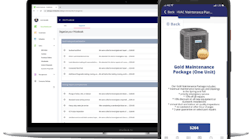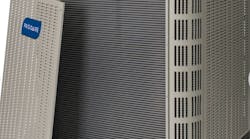For HVACR distributors in California who distribute or receive commonly used CFCs, HCFCs and HFCs, life has gotten more complicated since the beginning of the year. A new program instituted by the California Air Resources Board (CARB) requires distributors to keep detailed records and invoices of all these refrigerants, including documents to prove that the refrigerants they sell are to businesses that have at least one EPA-certified technician on-staff.
The new program, which took effect Jan. 1, has created a lot of extra work for California HVACR distributors; it's also left them scratching their heads as they try to determine how exactly the program will be monitored and enforced. While this regulation only affects California HVACR distributors, all distributors in the United States should pay attention to what's happening because the EPA looks closely at California environmental regulations for potential adaptation on a national level.
With so many questions posed by California HVACR distributors, HARDI is working with its members to educate them on the new rules, prepare them for an upcoming rule that will take effect in 2012 and continue to work with CARB, other government agencies, legislators and industry associations to defend and protect the interests of HVACR distributors and dealers.
Called the Refrigerant Management Program, the initiative aims to reduce emissions of high-Global Warming Potential (high-GWP) gases from stationary refrigeration systems and air-conditioning units. CARB cites leaking refrigeration systems as California's single largest source of these gases, and the new regulation aims to track the gases to ensure that they are properly used. It adopted the regulation in December 2009 as part of the state's Global Warming Solutions Act.
For HVACR distributors in California, the refrigerant management program is “just another thing they have to deal with,” says Jon Melchi, HARDI's manager of government affairs, who has worked closely with HARDI members in California on this new program. Specifically, all HVACR distributors must:
-
Retain on-site for at least five years all invoices of high-GWP refrigerants (CFCs, HCFCs and HFCs). Invoices must include purchaser's name, sale date(s) and type and quantity of the refrigerant.
-
Records of refrigerant sales or transfers to a company that services refrigeration systems must include documentation showing that the company employs at least one U.S. EPA-certified technician.
-
Annual reports submitted to CARB, starting in 2012, should also be kept on-site.
-
Records must be made available to CARB's executive office upon request.
These requirements add a new level of bureaucracy to HVACR distributors, and Melchi says that they don't really address the issue of greenhouse gases. “While certainly burdensome, these final regulations are far more palatable than CARB's original proposals, which absolutely would have threatened a lot of HVACR businesses.” Melchi continues, “these new regulations provide a decent model for preventing emissions from commercial HVACR systems but without knowing the enforcement mechanism behind them, it's uncertain how effective they'll be.”
While California distributors must comply with the new rule, many are unclear about the specifics. “They're up in arms over the new regulation, and there's a lot of confusion about the specifics,” says Emily Saving, HARDI's education services manager. To that end, HARDI has developed a series of informational documents to help its members as well as its dealers and contractor customers. “There has been a massive amount of confusion, and CARB has not done a great job of communicating. That puts the burden on our distributors to educate their customers and their customers' customers about the regulation,” she adds.
HARDI's comprehensive educational campaign around the regulations includes one-page sheets that distributor members and their customers can brand and distribute to their customers as well as an electronic learning course aimed at distributors' customers. HARDI has been working closely with CARB throughout the process to ensure that materials are accurate and timely. “Members are clamoring for this type of information,” Saving says of HARDI's informational campaign. HARDI's Refrigeration & Refrigerants Council and the members of its three subcommittees — Refrigerants, Refrigeration Equipment and Recovery and Reclamation — are working with HARDI staff to help educate its California members.
Page 2 of 2
“There is a significant opportunity for our industry within these new regulations, though,” adds Saving. “Informed and prepared contractors will have a strong competitive advantage by being able to go into facilities as a trusted advisor in that facility's compliance obligations; part of facility compliance is regular and proper servicing and maintenance.”
Also troubling for California HVACR distributors are additional regulations that take effect in the years ahead. The regulation that took effect this year impacts primarily large facilities, while the regulations set for 2014 and 2016 will impact smaller facilities.
One of the biggest questions that remain unanswered concerns enforcement. “We're not exactly sure how they're going to enforce this,” Melchi says. Under the Frequently Asked Questions page regarding program enforcement, the answers are vague: “Air districts may adopt a rule of equivalent emission reduction benefit under local authority. Air districts may enforce statewide regulation under agreements with the Air Resources Board with funding provided through fees paid by facilities subject to the regulation,” he adds.
Melchi points out that distributors will have to begin submitting their annual reports for this year in the spring of 2012, so regulators may wait until then to begin the enforcement function. “We're not sure how CARB is going to review this,” he says. Saving adds that, during a conference call with California officials in February, they didn't get a clear sense from CARB that they knew how enforcement was going to work.
But Melchi and Saving are advising members to complete the paperwork and follow the law to avoid penalties — regardless of how they feel about the law. “It is overburdensome,” Melchi says. “They're going to say that if you're doing the right thing, it shouldn't impact your business, but the regs do impose a number of new processes and procedures, which will certainly be a burden, especially on our smaller distributors.”
They note that the strict regulatory climate of California is detrimental to all businesses — the Risk Management Plan (RMP) is a prime example of how such rules are affecting the HVACR industry. “Things like this really add up and take a toll,” Mechi says. Adds Saving: “Some of our members wonder why they stay in California.”
While HARDI is working with its members to educate them on the RMP, it continues to lobby against other proposed California regulations that could hurt the HVACR industry. For example, HARDI has argued that an earlier proposed regulation to ban or over-regulate the use of 30-pound nonrefillable refrigerant cylinders would not have any significant effect on reducing refrigerant emissions. Melchi says the arguments made by HARDI and others have helped move state regulators away from this proposal.
“The costs would have been astronomical, and their proposal would have forced folks to load up cylinders on trucks and drive them all over, creating many more greenhouse gas emissions than they were hoping to save,” Melchi says. “It just wasn't practical and a recent study commissioned by the state confirmed that.”
All HVACR distributors should keep an eye on the RMP. The EPA is watching as well, Melchi says. If its implementation runs smoothly, the EPA may consider duplicating it nationwide. Then, HARDI will focus its efforts on Washington, D.C. “California is certainly a petri dish for a lot of the environmental rules,” Melchi says. “What's happening in California could be coming down the line, and HARDI is taking a proactive stance because these regulations essentially extend federal Sec. 608 rules to HFCs, which is something HARDI does support.”
For additional information on the RMP, visit the California Air Resources Board website at www.arb.ca.gov/cc/reftrack/reftrack.htm
Michael Maynard is a business writer based in Providence, RI, who writes on issues related to HVACR, construction and architecture. Contact him at [email protected].







